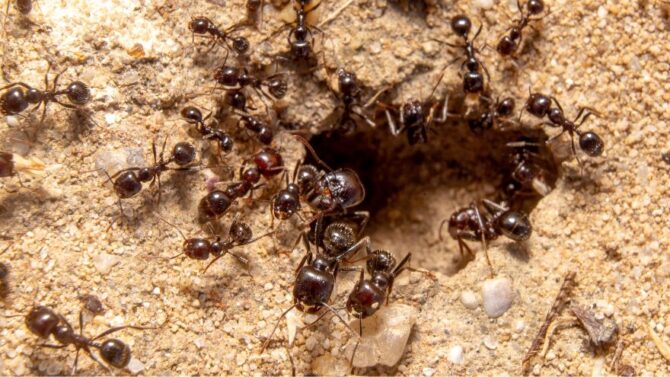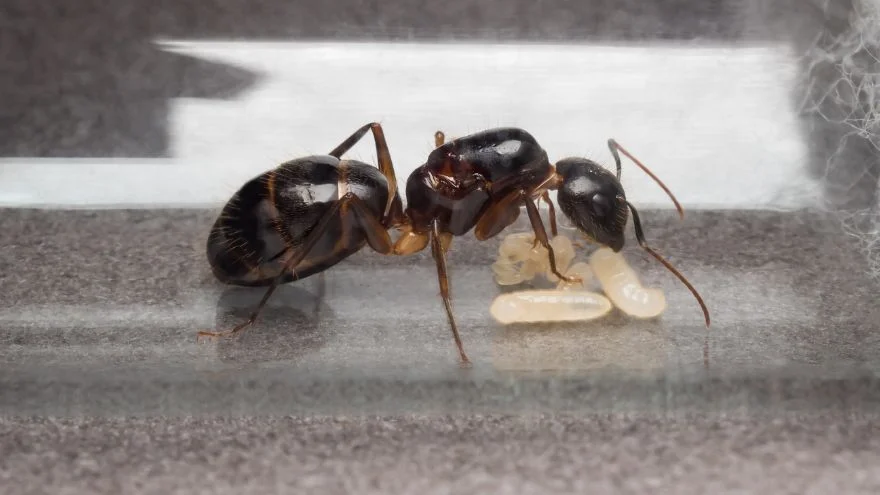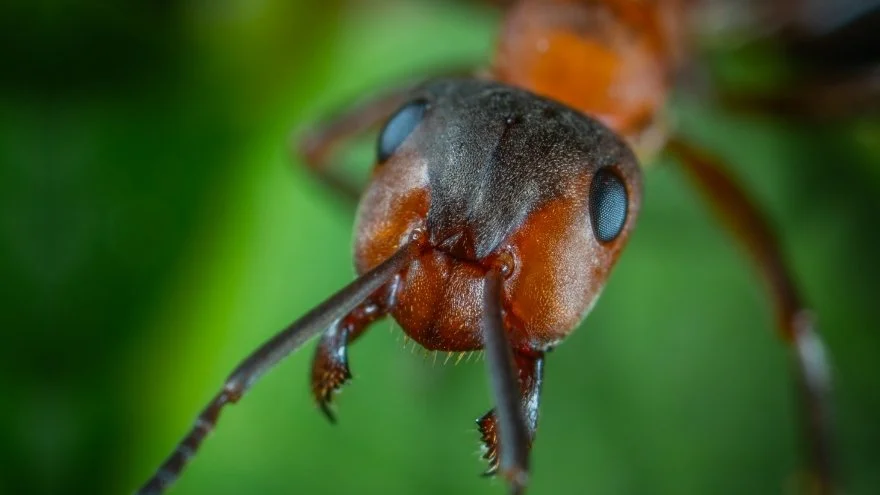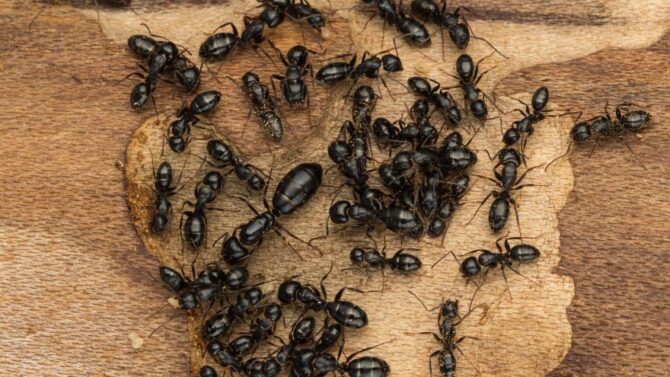An industrious creature, despite possessing a small body frame and being one of the tiniest animals on the planet, the ant has an astounding work rate and body structure.
The ant has six legs, three on each side of its body, with which it carries out the rigors of surviving life in its habitat.
The extent to which ants work and how their social structure is programmed makes us wonder not just about the mental capabilities of these creatures but also their bodies.
Read on to learn more about the marveling depths of the ant’s body structure.
How Many Legs Do Ants Have?
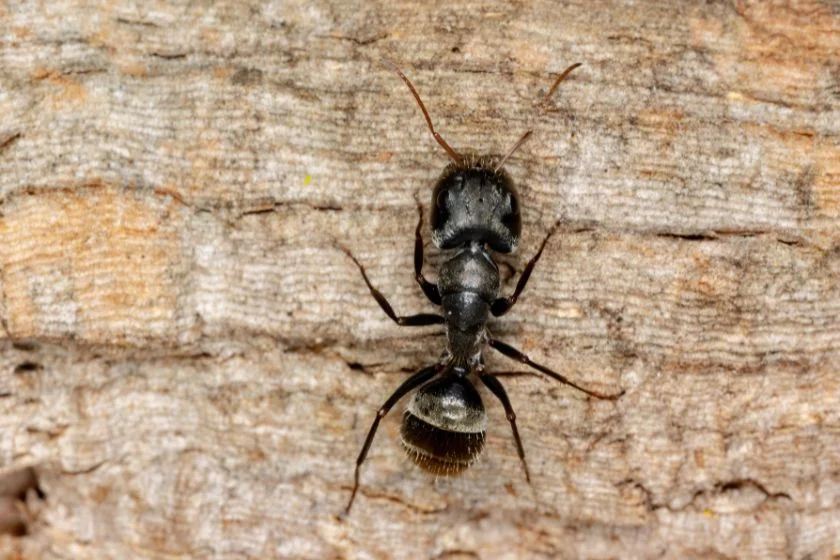
The thorax, the midsection of the three-chambered body of the ants, houses its six legs.
Like every part of the ant’s body, the thorax is made up of a strong, impregnable fibrous substance called chitin which forms the core of the ant’s exoskeleton structure.
On each side of the thorax, the ants have three legs. Aside from the presence of the protective casing of its exoskeleton, the thorax is structured well enough to withstand immense pressure.
The jointed legs of the ant, alongside the strong thorax, make it possible for the ant to lift and carry loads as much as ten times its entire body weight. How impressive![1]
That astounding ability of the ant is further made possible by the hooked claws in the ant legs, which enable it to hook on surfaces and climb even the steepest heights.
The ant’s legs remain one of the most fascinating wonders in the insect family.
The wonders of the ant’s leg are not limited to its ability to bear enormous weight but extend to its function.
Their legs boast of the alternating tripod gait, which translates to the fact that the front and last leg on one section of the ant moves in sync with the middle leg in the opposite section of the ant.
This impressive technique makes the ant not only move with enormous weights but also make amazing sprints and maneuvers to avoid dangers and manipulate obstacles.
Can Ants’ Legs Grow Back?
One common feature of larvae is the ability to repair themselves as they molt. If an insect loses a limb like a larva, the limb is replaced during molting.
For ants, it is a different instance. While ants molt, they do not possess limbs as larvae and only grow limbs when they metamorphosis to become adults.
If an ant loses a limb, it won’t grow back; they only grow legs when they become adults.
Though ants lack the ability to replace damaged limbs, they can recover quite well from injuries, but depending on the extent of injuries sustained, recovery can be incomplete.
Ants Body Structure: What’s Inside the Ant?
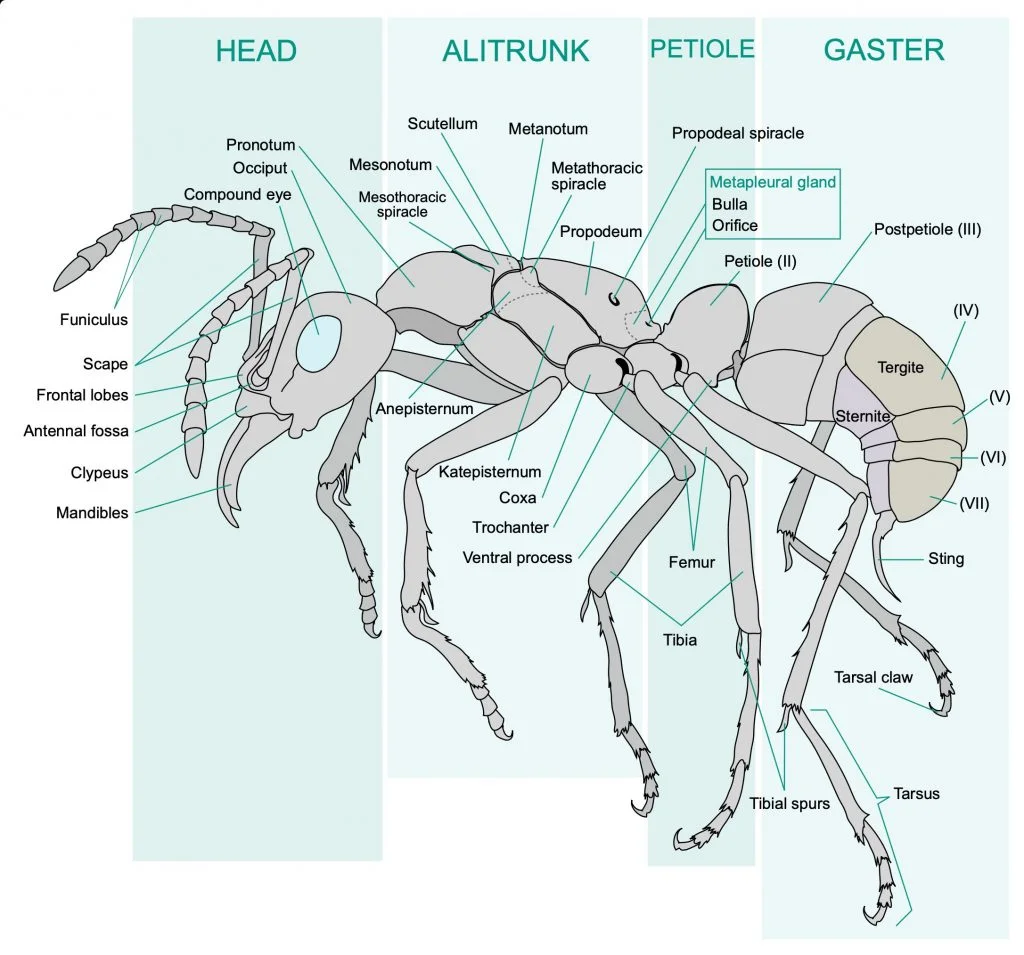
The ant’s leg is not the only part of its body with which it performs wonders. Other body parts exist with which the ant performs astounding abilities.
These body parts exist in three structures of the animal’s body, namely, the head, mesosoma, and the gaster.
We review each section of the ant’s body and its peculiar function.
Head
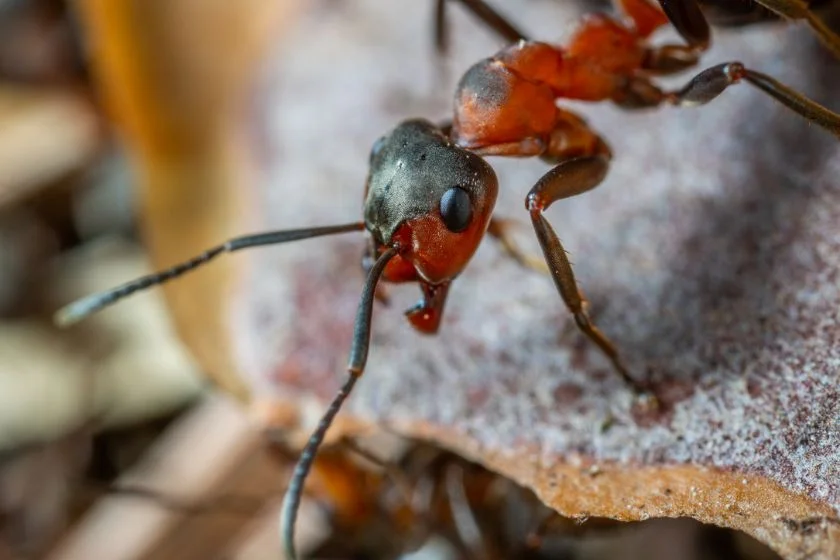
The head of the ant is home to three major organs, which play an integral role in the ant’s search for food in the wildlife.
Antenna
The ant has two antennae attached to its head. The antennae often referred to as feelers, help the ant detect chemicals, vibrations, air currents, and food.
The antennae are also the primary means of communication in ants as it used to send signals to the ant colony, and transmission of these signals is done by touch.
An ingenious means of communication in these wondrous creatures.
The antennae of the ant are also used in identifying species of ants by ants.
Should an ant approach an ant of another species, by the signals communicated through the touch of their antennae, both ants would be able to identify if they belong to the same species.
The design of ants’ antennae is an important feature used in differentiating ant species, as certain ants’ antennae are clubbed.
Also see: Do Ants Have Ears? Can Ants Hear Sounds?
Compound Eyes
The eyes of the ant are formed with a large pupil similar to that of a cat.
The compound eye of the ant has about 596 pigment photoreceptors cells called ommatidia which primarily detects movement but offers poor image resolution.[2]
Alongside the compound eyes, the ant has three simple eyes, the ocelli, on the top of its head, with which it detects light.
Generally, ants have poor eyesight, with some ant species being completely blind.
However, an exception to this is the bulldog ant native to Australia, which boasts of excellent sight.
Mandibles
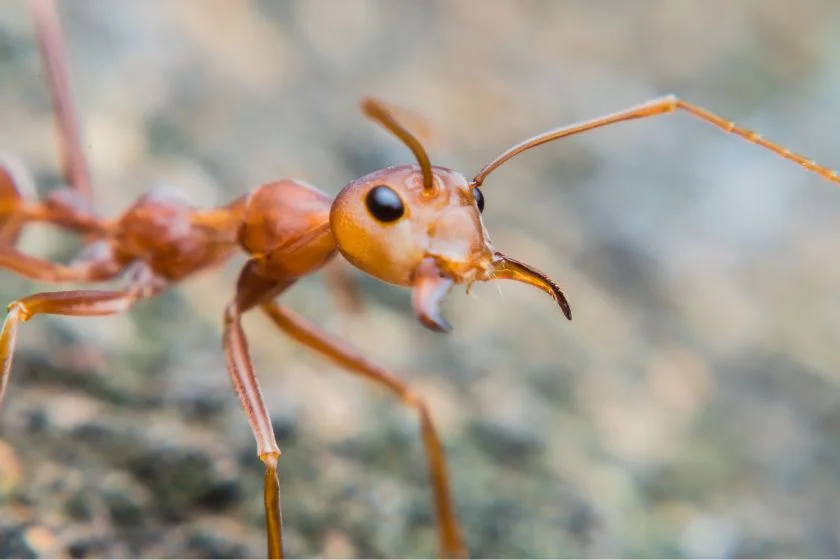
A major component of the ant’s head is its mandible. The mandible of the ant are two strong jaws used by the ant for breaking down food and also carrying food.
Ants that feed on insects also use their strong mandibles to dismember and decapitate prey.
The mandible is also used for constructing nests and for defense.
In certain species of ants, the intrabuccal chamber, a small section in the mouth, exists and is used for passing food to other ants or to larvae.
Mesosoma
The mesosoma, the middle section of the ant, is in the center of the ant’s body and contains the thorax and abdomen.
The thorax comes before the abdomen and contains the six legs of the ant, three on each side of the ant.
The abdomen comes after the thorax and houses the important organs in the ant. It is home to the ants’ excretory, reproductive, and respiratory systems.
The organs contained in the ant’s abdomen make it one of the most vital parts of its body.
Petiole
The petiole is not recognized as a major section of the ant’s body. Rather, it is a flexible part of the ant’s body that links the mesosoma and the gaster.
The petiole in ants is the major body part that distinguishes ants from other insects.
Gaster
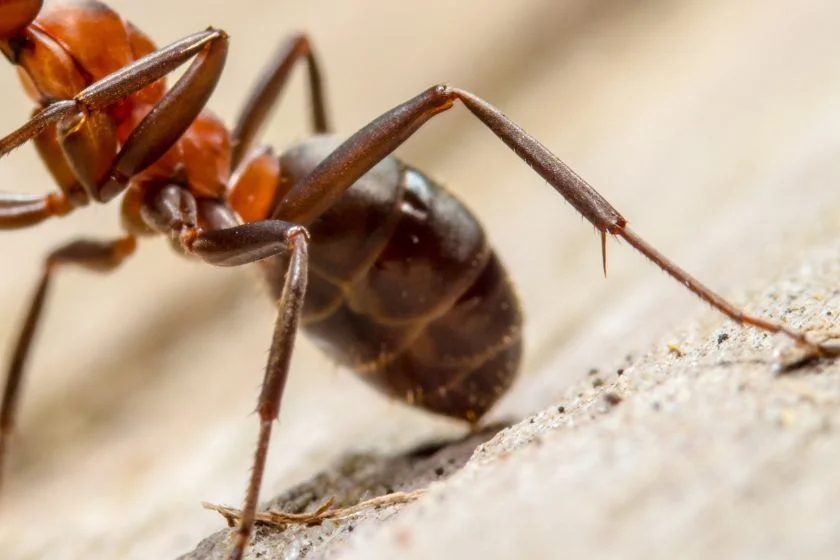
The last section of the ant’s body, the gaster, contains one of the core features of body functionality.
The gaster contains the heart of the ant as well as the digestive system.
The defensive mechanism of the ants, an integral feature for its survival, is located in the gaster.
This defensive mechanism is an acid pore through which they inject threats and prey with venoms.
Depending on the species of ants, a small opening in the gaster for spraying formica acids on prey or threats exists.
Frequently Asked Questions
How many body divisions does a ant have?
Ants’ bodies are divided into three parts; the head, the mesosoma (combination of the abdomen and thorax), and the gaster.
The entire body section is covered by a hard exoskeleton made up of a fibrous structure known as chitin.
The body parts of the ant are no different from that of most insects, but the presence of the petiole differentiates it from other animals.
Do ants have hearts?
Though the ant lacks a proper heart like most organs, it has an organ that operates in a similar function as the heart.
The dorsal aorta acts as the heart of the ant, as it is responsible for pumping the hemolymph fluid through the body of the ant.
What color is ants’ blood?
Ants do not have blood but a greenish or yellowish fluid known as hemolymph or hemolymph. The hemolymph is made up of salts, water, and amino acids.
Unlike blood in vertebrate animals, the hemolymph does not transport oxygen in ants but transports nutrients.
Do ants have brains?
As tiny as the ant is, it has a brain with which it coordinates and functions. An ant’s brain is simple in structure and made up of 250,000 neurons, compared to the billions in larger animal brains.
While the brain of the ant may be small, the collective brains of a colony of ants match that of a single mammal.
Conclusion
The ant’s legs present tremendous wonders that say so much about nature’s ingenuity.
Despite being tiny and one of the seemingly inconsequential creatures on the planet, ants have shown that they are as intellectual as some of the biggest creatures.

